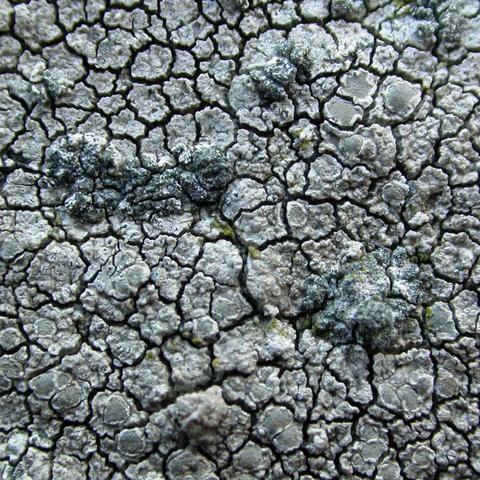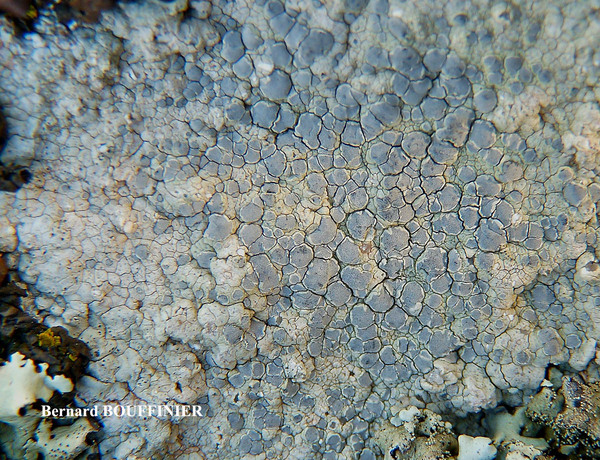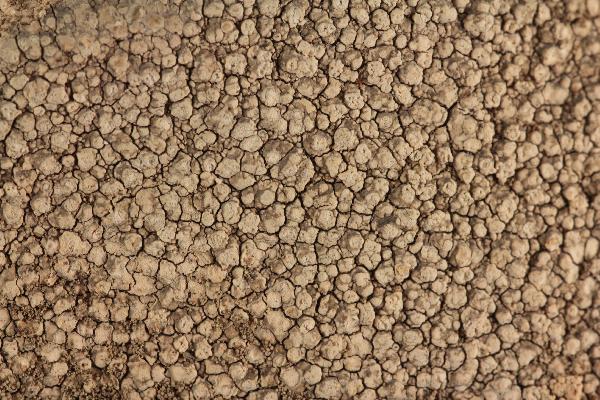Glaucomaria rupicola subsp. rupicola var. efflorens (Leuckert & Poelt) ined.
provisionally placed here, ICN Art. 36.1b. . Basionym: Lecanora rupicola subsp. rupicola var. efflorens Leuckert & Poelt - Nova Hedwigia, 49: 151, 1989.
Synonyms: Lecanora rupicola f. sorediata (Flot.) Zahlbr.; Lecanora rupicola subsp. rupicola var. efflorens Leuckert & Poelt
Distribution: N - Frl, Piem (TSB 35252), Emil (Fariselli & al. 2020). C - Sar. S - Si.
Description: Thallus crustose, episubstratic, finely rimose-areolate to slightly verrucose, whitish grey to ash-grey, sometimes delimited by a dark prothallus, sorediate. Areoles flat, ecorticate, smooth, epruinose, bearing scattered, flat to convex, bluish-grey soralia. Apothecia almost always present, lecanorine, subimmersed when young, then sessile, (0.5-)1-2(-3) mm across, with a brown, grey brown or black (in forms parasitized by Arthonia varians), but heavily bluish-white-pruinose, usually flat disc, and a thin, persistent, smooth, sometimes flexuose thalline margin; proper margin not visible macroscopically. Thalline exciple pseudocorticate, with numerous algal cells, containing small crystals soluble in K; proper exciple colourless, lacking crystals; epithecium almost colourless to yellowish or greenish brown, the pigment dissolving in K, with a layer of crystals dissolving in K and reacting C+ yellow; hymenium colourless, 75-95 µm high, not inspersed; paraphyses 2-3 µm thick, the apical cells not or slightly thickened, to 3.5 µm wide; hypothecium colourless Asci 8-spored, elongate-clavate, very thin-walled, with a K/I+ blue, tall tholus penetrated by a faintly amyloid apical cushion, the wall K/I-, surrounded by a K/I+ blue outer layer, Lecanora-type. Ascospores 1-celled, hyaline, ellipsoid, 9-15 x 5-8 µm, the wall <1 µm thick. Pycnidia immersed, the wall colourless except around the ostiole. Conidia thread-like, cometimes curved, 14-25 µm long. Photobiont chlorococcoid. Spot tests: thallus K+ yellow, C-, KC-, P- or P+ pale yellow, UV+ white; apothecial disc C+ bright lemon-yellow, P-. Chemistry: thallus with atranorin (major), roccellic acid (major), chloroatranorin and eugenitol (minor); pruina of apothecia with sordidone (major).Note: optimum in somehow more shaded-humid situations than the typical variety; probably more widespread in the Alps.
Growth form: Crustose
Substrata: rocks
Photobiont: green algae other than Trentepohlia
Reproductive strategy: mainly asexual, by soredia, or soredia-like structures (e.g. blastidia)
Commonnes-rarity: (info)
Alpine belt: very rare
Subalpine belt: rather rare
Oromediterranean belt: very rare
Montane belt: very rare
Submediterranean belt: absent
Padanian area: absent
Humid submediterranean belt: absent
Humid mediterranean belt: absent
Dry mediterranean belt: absent
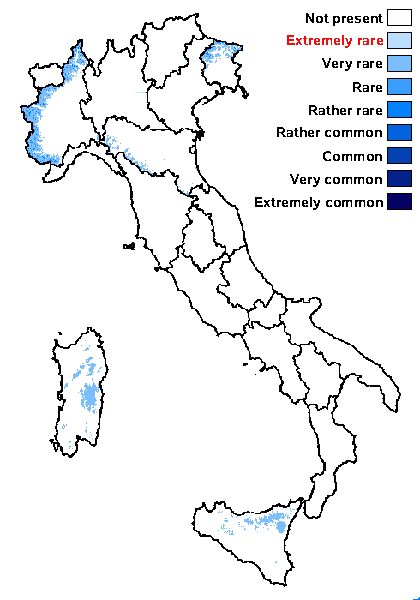
Predictive model
Herbarium samples
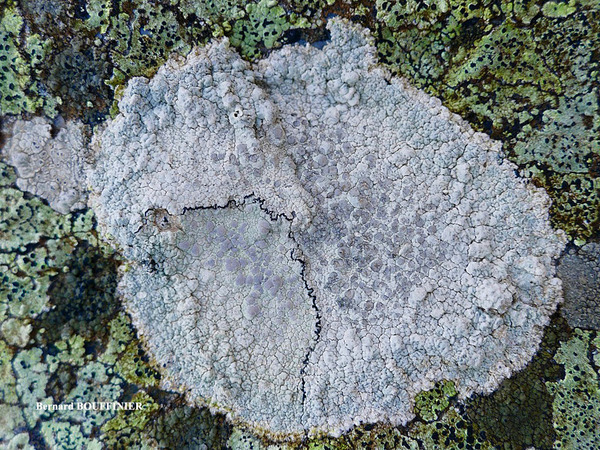
Bernard Bouffinier - Source: http://www.lichensmaritimes.org/index.php?task=fiche&lichen=1052&lang=en
France, Corse, Lumio
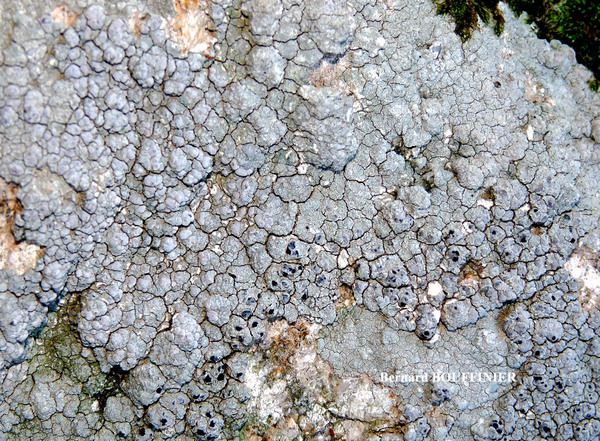
Bernard Bouffinier - Source: http://www.lichensmaritimes.org/index.php?task=fiche&lichen=1052&lang=en
France, Corse, Lumio
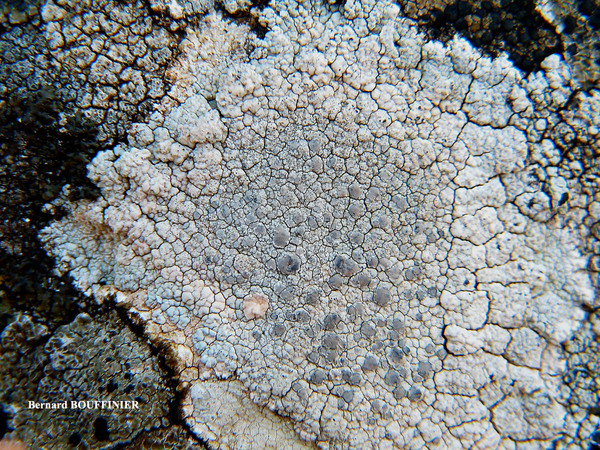
Bernard Bouffinier - Source: http://www.lichensmaritimes.org/index.php?task=fiche&lichen=1052&lang=en
Italy, Sardinia
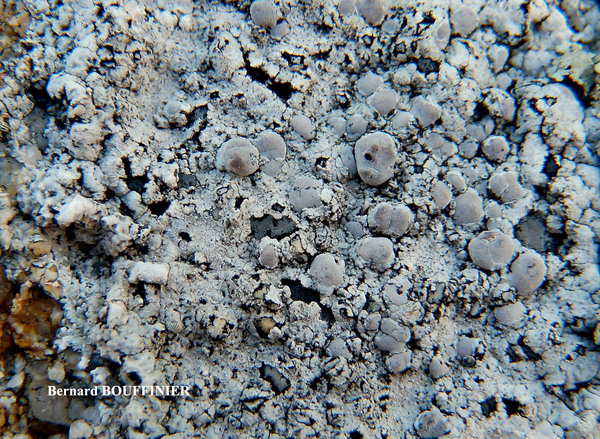
Bernard Bouffinier - Source: http://www.lichensmaritimes.org/index.php?task=fiche&lichen=1052&lang=en
Italy, Sardinia
Growth form: Crustose
Substrata: rocks
Photobiont: green algae other than Trentepohlia
Reproductive strategy: mainly asexual, by soredia, or soredia-like structures (e.g. blastidia)
Commonnes-rarity: (info)
Alpine belt: very rare
Subalpine belt: rather rare
Oromediterranean belt: very rare
Montane belt: very rare
Submediterranean belt: absent
Padanian area: absent
Humid submediterranean belt: absent
Humid mediterranean belt: absent
Dry mediterranean belt: absent

Predictive model
| Herbarium samples |

Bernard Bouffinier - Source: http://www.lichensmaritimes.org/index.php?task=fiche&lichen=1052&lang=en
France, Corse, Lumio

Bernard Bouffinier - Source: http://www.lichensmaritimes.org/index.php?task=fiche&lichen=1052&lang=en
France, Corse, Lumio

Bernard Bouffinier - Source: http://www.lichensmaritimes.org/index.php?task=fiche&lichen=1052&lang=en
Italy, Sardinia

 DOLICHENS
DOLICHENS
